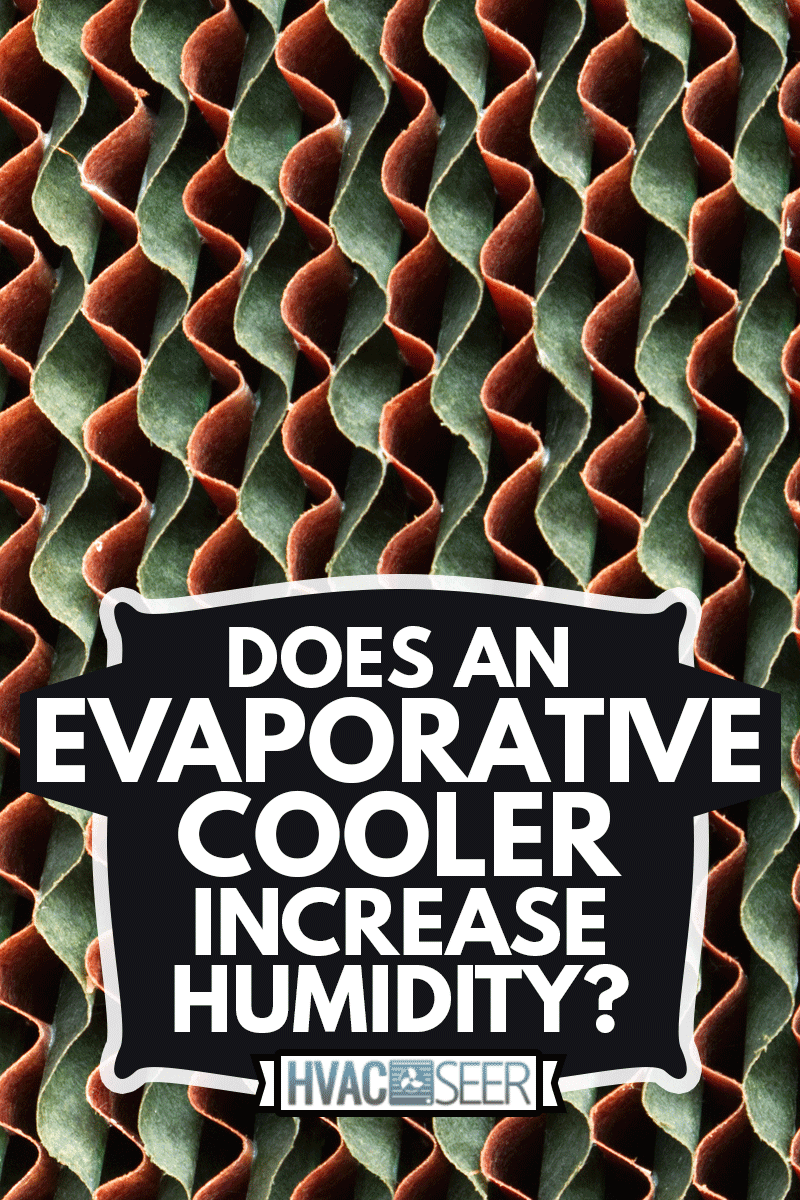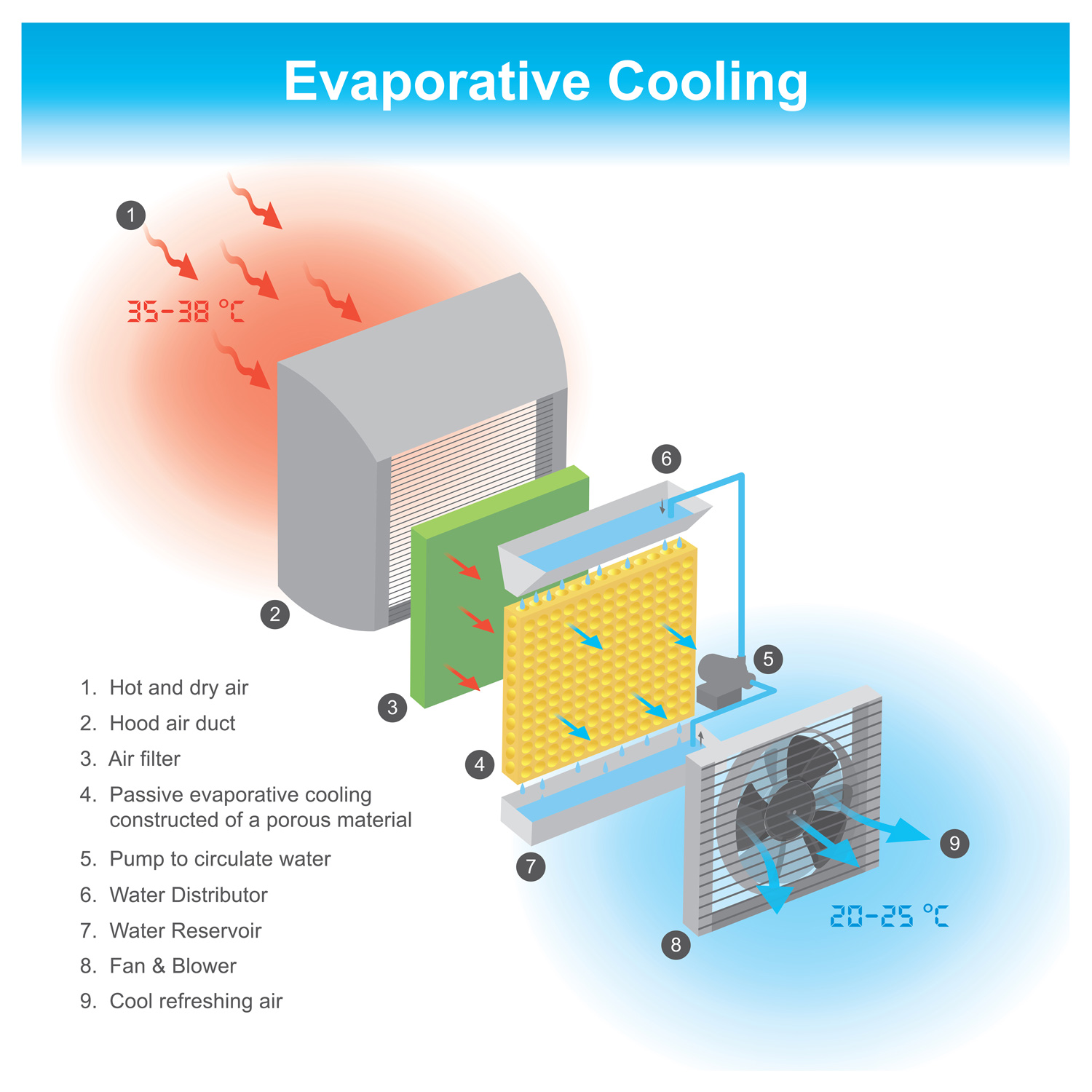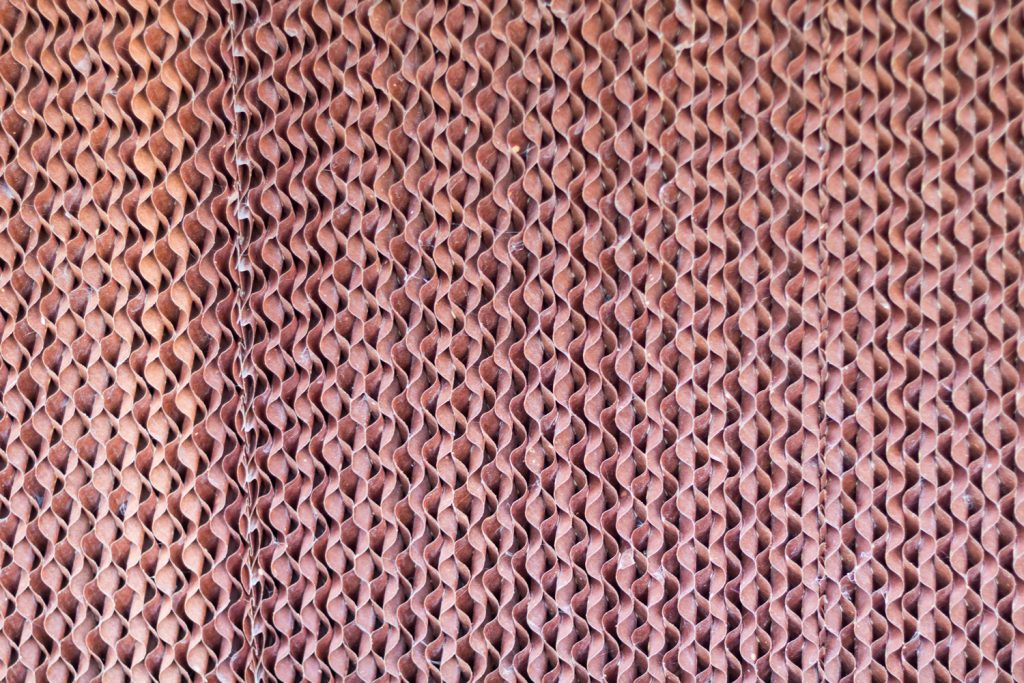You are looking for cooling options for your home and wonder if an evaporative cooler will increase the relative humidity in your home. There are different kinds of evaporative coolers, and the answer varies based on the type of cooler. We've researched evaporative cooler types to get more details about using evaporative coolers in your home.
A direct evaporative cooler increases humidity. This kind of cooler is also called a swamp cooler. An indirect evaporative cooler has another mechanism to prevent moisture from entering the cooling air stream. Indirect evaporative coolers do not increase the relative humidity in the air.
Your climate and relative humidity level should help you determine what kind of cooling system you want to install for your home. There are several considerations to make when choosing between direct evaporative coolers, indirect coolers, and air conditioners. You might wonder how much humidity is too much for using an evaporative cooler in your home. You might also wonder how efficiently they operate, including how much water they use on a daily basis. Keep reading to get the answers to all of your questions.

Does An Evaporative Cooler Increase Humidity?
There are two kinds of evaporative coolers. Direct evaporative coolers are also known as swamp coolers. They run air through a water-soaked pad that filters and cools the air. Since the air runs through a wet pad, this moisture does evaporate into the air and increases the relative humidity. This kind of evaporative cooler is a great option for people living in dry climates with low relative humidity. Increasing the humidity in the air is beneficial for a number of reasons, so your cooling system also serves as an air humidifier for your living area.
Indirect evaporative coolers have an extra heating mechanism that prevents moisture from entering the air stream. They use the same process to create cool air as direct coolers, but with an extra step to prevent any increase to your home's relative humidity level. If you are a homeowner living in a humid climate, then the indirect evaporative cooler is a better option. The indirect evaporative cooler still works best in low humid environments.

Do Air Conditioners Increase Humidity?
Air conditioners have the opposite effect of direct evaporative coolers. Instead of adding moisture to the air, air conditioning units lower the room's relative humidity during the cooling process. This works differently from a de-humidifier as this moisture can re-enter the air when the unit is not running. Air conditioning units are not as efficient as evaporative coolers in low humidity, but it is usually a preferable option for high humidity areas.
You can get more information about air conditioners and a comprehensive answer to this question by reading "Does Air Conditioning Add Moisture To The Air?"
What Humidity Is Too High For Evaporative Cooling?
Areas with an average relative humidity higher than 60 percent will begin to have difficulty using an evaporative cooler. It will still blow out cold air but will not cool a room or house as efficiently as an air conditioning unit. Evaporative coolers can work better in humid rooms if windows are open. Another solution to high humidity is to also run a dehumidifier to counter the extra moisture being added to the air.
SEAVON Dehumidifier For 530 Square Feet
Click here to buy SEAVON dehumidifier for 530 square feet from Amazon.
How Do You Lower The Humidity In An Evaporative Cooler?
People can still use evaporative coolers in high humid rooms. The strategy is to open a window or door to allow outside air to cycle into the room. This sends some of the high-moisture air outside. You may think this is a bad idea because it will let the cooler air back outside. You don't want to pay to cool the outdoors. Evaporative coolers work more efficiently to cool the air when there is lower humidity. The increased efficiency of your unit will outweigh any losses from the cold air moving outdoors.
If the outside air is too warm and you prefer not to open the windows, there is another option. You could run a de-humidifier to counter-balance the moisture that is being added to the air by your cooling unit. The goal is to keep the humidity level below 55 percent for optimum efficiency. The ideal humidity level for health and comfort is between 30 and 50 percent, which would also allow your evaporative cooler to work efficiently.
For more information on this topic, check out "How To Naturally Reduce Humidity In A Room."
Hessaire Portable Evaporative Cooler (950 Sq Ft)
Click here to buy Hessaire Portable Evaporative Cooler (950 sq ft.) from Amazon.
How Much Water Does An Evaporative Cooler Use Per Day?
Evaporative coolers may use from one gallon to seven gallons per hour, depending on the humidity level and the speed of the fan. Some people will keep their coolers on for 24 hours a day because they do not consume large amounts of electricity. Based on our example, an evaporative cooler could use 24 gallons to 168 gallons of water per day. If your cooler is on the higher end of the water use range, consider strategies to lower your home's humidity level. You might want to use a de-humidifier or open more windows to increase the airflow.
There are more strategies to promote airflow in spaces where there are no windows. It's also possible that you don't want to keep your windows open for long periods of time. Learn more about improving air circulation by checking out "How To Improve Air Circulation In A Room Without Windows."

How Often Do Cooler Pads Need To Be Replaced?
There is little maintenance required for evaporative cooling systems, but the moisture pads do need to be replaced. On average, you can expect to change these out every three to five years. You should inspect the pad before the start of each cooling season. Look for loss of thickness, frayed edges, or other signs of deterioration. If you see any kind of deterioration like this, it is a good idea to change the cooling pad before the start of the season.
Dial Mastercool Cooler Pad (40x28x8)
Click here to buy Dial Mastercool Cooler Pad (40x28x8) from Amazon.
Do Evaporative Coolers Cool A Room?
Evaporative coolers are effective in cooling one large room. A single unit will work to cool one room but will not be effective in cooling a whole house. There are whole-house evaporative cooling systems that are effective and efficient for cooling larger areas. This is still considered a more efficient option for cooling than central air conditioning units as long as you can keep the relative humidity percentage lower in your home.
In Closing
Evaporative coolers are efficient for cooling spaces with low relative humidity. The level of relative humidity in your home should stay between 30 and 50 percent for optimum efficiency of your unit. You can still operate an evaporative cooler at humidity percentages up to 60 percent or more. In order to do this, you will want to employ strategies to increase airflow. This might include opening the windows to allow the humid air to escape. Another option is to use a dehumidifier to counter the humidity that is being added by the evaporative cooler.
If you live in a humid area, then an indirect evaporative cooler is an option that will not add to the relative humidity in the air. You will still want to employ strategies to decrease the relative humidity to increase the efficiency of your unit. Evaporative coolers are more efficient for cooling houses under 60 percent humidity.



